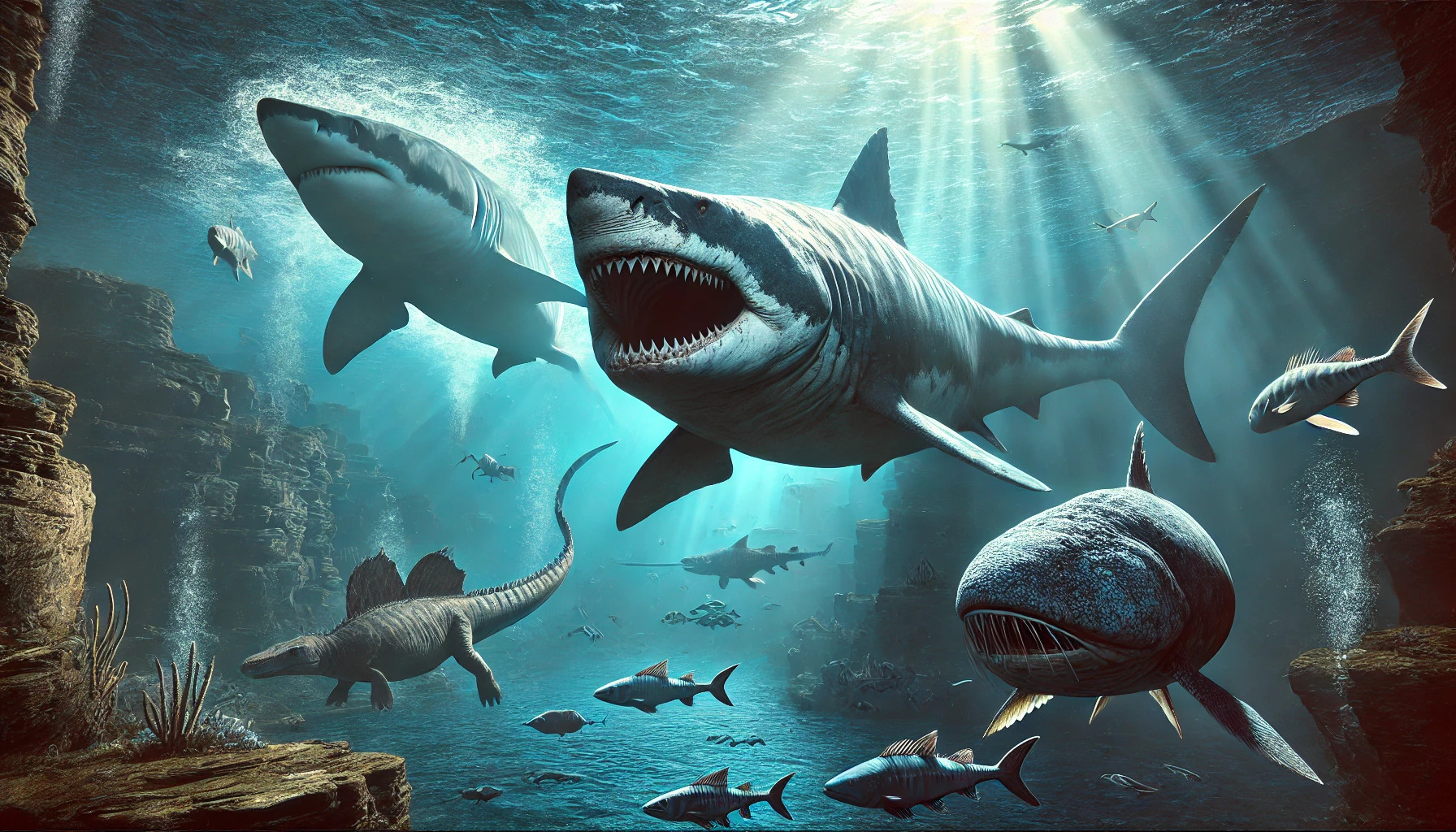The oceans of the past were home to some truly massive predators. From the fearsome Megalodon to the swift Ichthyotitan, these ancient creatures dominated their underwater environments. Among them, Megalodon stands out as one of the largest marine predators ever, reaching lengths of up to 60 feet.
In the distant seas, other giants like the Liopleurodon and Mosasaurus navigated the waters, striking fear into the hearts of smaller marine life. These ancient hunters were equipped with immense power and incredible hunting skills that allowed them to thrive in their ecosystems.
Exploring the world of these extinct marine animals reveals not only their size but also their unique adaptations for survival. Readers will discover intriguing facts and vivid images of these underwater titans that once ruled the seas.
The Reign of the Great Marine Reptiles
The great marine reptiles ruled the oceans for millions of years. This section discusses two of the most impressive groups: mosasaurs and pliosaurs. Each had unique features that helped them dominate their habitats.
Majestic Mosasaurs
Mosasaurs were among the largest marine reptiles ever to swim in the ocean. They lived during the Late Cretaceous period, about 70 million years ago, and reached lengths of up to 60 feet.
These creatures had streamlined bodies, strong tails, and powerful jaws filled with sharp teeth. They were versatile hunters, feeding on fish, squid, and even larger prey like turtles. Some scientists believe they could swim at high speeds, making them effective predators.
Mosasaurs are fascinating because they were closely related to modern snakes and lizards. Their adaptability allowed them to thrive in diverse marine environments.
Prehistoric Pliosaurs
Pliosaurs were another group of formidable marine reptiles, known for their massive heads and short necks. They existed from the Late Jurassic to the Late Cretaceous periods, becoming top predators of their time.
Some pliosaurs could grow over 40 feet long, with powerful flippers that helped them navigate through the water. Their large mouths had immense teeth designed for gripping slippery prey, like fish and squid.
These reptiles were skilled hunters, using their strength and speed to catch food. They often competed with mosasaurs, creating a fierce rivalry in the oceans.
Dominance of the Giant Sharks
Giant sharks ruled the oceans and were the top predators of their time. These massive creatures had few rivals and evolved to become highly effective hunters. One of the most well-known giant sharks is the megalodon.
Terrifying Megalodon
The megalodon was among the largest predatory sharks ever to exist. It swam the oceans around 3.6 million years ago, reaching lengths of up to 60 feet. This colossal shark had powerful jaws filled with large, serrated teeth, which could easily slice through flesh and bone.
Megalodon’s size made it a dominant predator, hunting massive prey, including whales. Its robust skeleton and immense weight, estimated at around 50 tons, made it a force to be reckoned with in the marine environment. The extinction of the megalodon marked the end of an era, as this magnificent creature left its mark in the history of ocean life.
Cretaceous Seas and Their Apex Predators
The Cretaceous period was a time when the seas were filled with massive predators. Among these fierce creatures, ichthyosaurs stood out as remarkable hunters of the ocean.
The Mighty Ichthyosaurs
Ichthyosaurs were sleek, dolphin-like reptiles that thrived in the Cretaceous seas. They could grow up to 20 feet long and had powerful tails that helped them swim quickly.
Their long, streamlined bodies allowed them to chase down fish and squid with ease. Ichthyosaurs had large eyes, which made them effective hunters, even in deeper waters where light was scarce.
These animals had sharp teeth that enabled them to grasp slippery prey. Ichthyosaurs were among the top predators of their time, showcasing the diverse and unique life that once inhabited the oceans.

